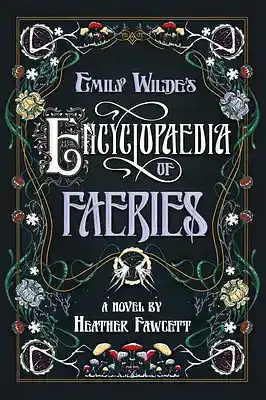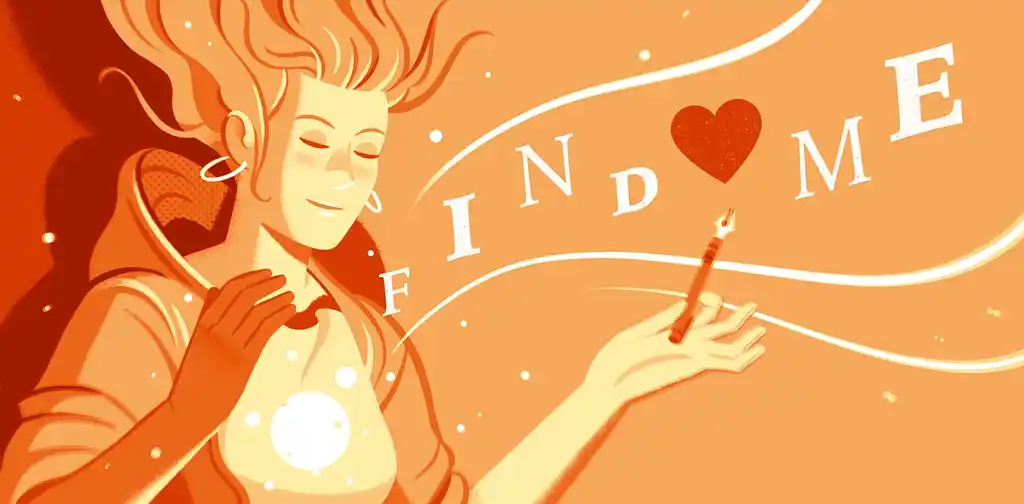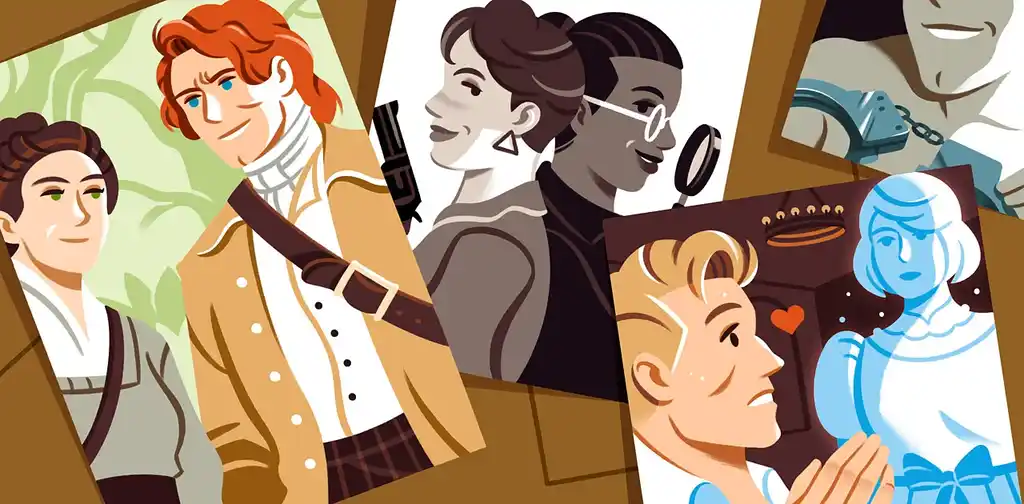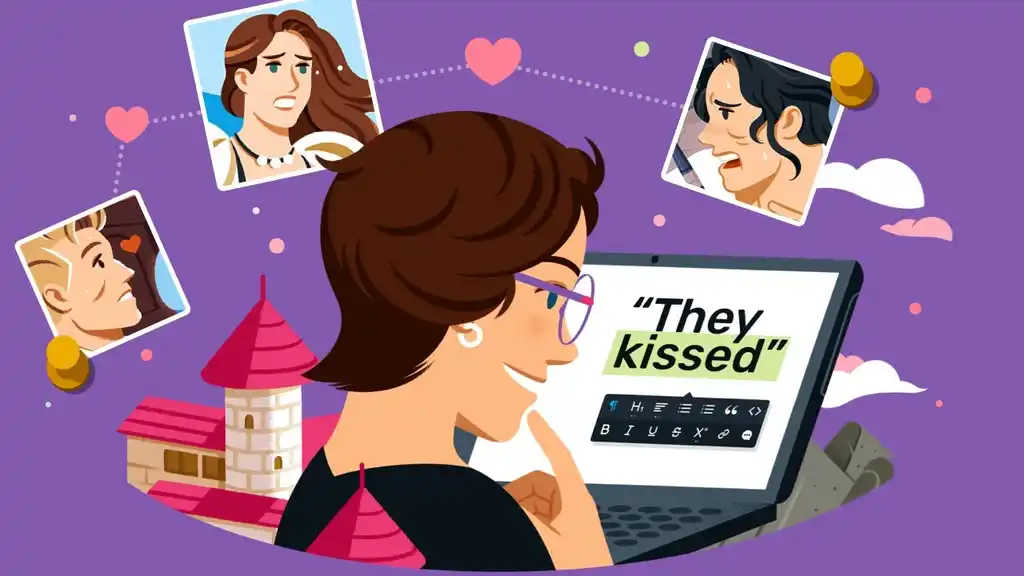Blog • Understanding Publishing
Last updated on Oct 15, 2025
Romantasy: The Hottest New Trend in Fiction, Explained
Isabella Peralta
A writer and editor, Isabella coordinates "Prompts," Reedsy's weekly short story competition. Originally from the Philippines, she is a graduate of the University of Cambridge.
View profile →Romantasy is a subgenre that equally blends fantasy and romance. In recent years, stories with our favorite romance plots — from love triangles to "enemies to lovers" — set in magical realms have surged in popularity to the point where almost every commercial bookstore now carries popular romantasy titles.
In this post, we’ll dive deeper into this thriving subgenre, exploring its key elements and highlighting a few examples from contemporary literature.
What is romantasy? A brief history
Romantasy, also known as fantasy romance or romantic fantasy, features love stories set in mystical realms rather than realistic, contemporary settings. These worlds are often populated with magical creatures like dragons, fairies, or werewolves, adding an element of enchantment to the romance.
While these types of stories are nothing new, the term "romantasy" only gained popularity in recent years, largely thanks to online reading communities like BookTok and Bookstagram. A Guardian article from February 2024 notes that the term "romantasy" first appeared on Urban Dictionary in 2008. However, it didn’t gain tons of popularity until 2022, when Bloomsbury claimed they coined the word to describe Sarah J. Maas's work.
Maas's A Court of Thorns and Roses (ACOTAR) series is not by any means the first traditionally published romantasy series, but it’s arguably one of the most successful ones of all time. It has sold over 13 million copies and has even been optioned by Hulu for a television series adaptation. Since the series went viral on social media (racking up over 14 billion views on TikTok alone!) readers grew hungry for similar books, which led to the rise in similar romantasy titles like Rebecca Yarros’s widely popular novel Fourth Wing.
In a Reedsy Live event, Jennifer L. Armentrout, author of the bestselling romantasy series Blood and Ash, discussed the rise of romantasy with editor Rebecca Heyman. They noted that for many readers, romantasy offers an alternative to traditional high fantasy, which has historically been dominated by male authors like J.R.R. Tolkien, George R.R. Martin, and Patrick Rothfuss in which romance elements were either sidelined or depicted negatively.
Romantasy challenges this tradition by putting romance-driven fantasy stories in the spotlight. It also seeks to give romance the respect it has often been denied in the literary world. “It's taken a while to get respect for being a fantasy book that is also a romance,” Armentrout notes. “I think that is why the new genre term was created. For the longest time, a book was not called fantasy if it contained romantic elements. Instead, it was ‘paranormal.’”
Now, with this new term, romantasy is seeing a female-led renaissance, and it has become one of the hottest trends in fiction in recent years.
“Fantasy has such crossover appeal,” Armentrout adds. “It transcends age and gender — one person may be reading it for romance, while someone else reads it for the action, and another person is most interested in the fantasy elements. That is part of the reason I think fantasy romance has developed its own tropes — the fantasy elements have as much prevalence as the romance does, which you don’t often see in other genres.”
Armentrout also notes that romantasy has indirectly introduced new readers to romance. “A lot of romantasy covers look like fantasy books, so new readers may not be aware that they're reading a fantasy romance, which is expanding the readership.”
If you're excited about this trend and want to learn how to write your own romantasy stories, the next step is to get familiar with some of the subgenre’s key tropes...
3 popular romantasy tropes
Like many other subgenres, romantasy comes with its own set of tropes — common themes, motifs, or plot devices that frequently appear in fantasy and romance books. While tropes aren't a requirement, they’re often included because they offer readers a sense of familiarity and excitement.
Some authors worry about using tropes and aiming for complete originality, but as Armentrout suggests, embracing them does no harm. "You're not going to be able to escape tropes. At the end of the day, there are only so many ways to write a fantasy book. What makes tropes unique is your voice — how you tell the story through your style of writing."
On that note, let’s look at some of the most tried-and-true tropes you’ll find in romantasy.
The Love Triangle
Ah, the love triangle. You’re probably no stranger to this classic romance trope, but just in case, here’s our most basic definition of it: a situation in which two people have romantic feelings for the same person. (Technically, that’s a “V,” since a true love triangle would involve person A liking person B, who in turn likes person C, who in turn likes person A. But we’re going with the definition that’s most common in popular contemporary media!)
Love triangles are always fun to read because there’s that constant tension of “Will they, won't they?” between the protagonist and not just one, but two people! And most of the time, we can never be 100% certain who the protagonist will end up choosing, which means we’ve got to keep on reading until the very last chapter for all our questions to be answered.
Example: Daughter of the Moon Goddess by Sue Lynn Tan
An example of a captivating love triangle in romantasy can be found in Sue Lynn Tan’s popular Chinese mythology-inspired duology. In Tan’s first book, Daughter of the Moon Goddess, the reader is introduced to main character Xingyin and her two love interests: the Celestial Emperor’s charming son, Crown Prince Liwei, and the enigmatic Captain Wenzhi. Who will Xingyin ultimately choose? You’ll have to read it yourself to find out!
Enemies to Lovers
Another popular trope that’s been taking the book-loving communities on social media by storm is the enemies-to-lovers trope. As the name suggests, it’s all about rivals falling in love. While their hatred for each other at the start may be strong, there’s just no denying the overpowering chemistry between them!
But authors, beware! It can be hard to walk the fine line between love and hate, and the end goal is for the readers to want the characters to end up together, so be careful not to make them irreversibly cruel to each other.
Example: Caraval by Stephanie Garber
One of our favorite romantasy books that we think does enemies to lovers right is Caraval. The novel, which takes place on an enchanted island called Isla de los Sueños, follows sisters Scarlett and Tella as they participate in a dangerous game known as Caraval.
Scarlett meets a charismatic, mysterious performer named Julian, and she instantly deems him untrustworthy and somewhat infuriating. But after Tella is hidden from her sister as part of the game, Scarlett must put her suspicions aside and work with Julian to navigate the challenges of Caraval together and find Tella. If you’re looking for a story with love at first sight, this definitely isn’t it — but seeing Scarlett and Julian engage in playful banter, become more vulnerable with each other, and slowly fall in love is so worth it!
The Fake Relationship
Like the previous trope, this one is pretty straightforward: two characters fake a relationship for mutual benefit but end up falling for each other. (If you know of the first book of Julia Quinn’s Bridgerton series, The Duke and I, then you’re probably familiar with the premise.)
Example: Empire of Sand by Tasha Suri
In this Mughal India-inspired novel, Mehr, the daughter of a former temple dancer and a nobleman, puts her life in danger when her magical abilities tied to the daiva (powerful otherworldly beings) are unexpectedly discovered.
To save her family and herself, Mehr agrees to enter a relationship with Aruj, the son of a powerful leader among the daiva. What started out as something with fake feelings, however, turns into something very real — all the time Mehr and Aruj spend together leads to deeper understanding, respect, and of course, love.
Now that we know some of the best romantasy tropes out there, let’s look at a few more elements that budding writers should consider…
3 tips for writing romantasy
While there's no strict formula for crafting a romantasy novel, you can add these “ingredients” to come up with a story that'll leave readers wanting more.
Throw in a meet-cute
First impressions matter, especially when a character meets the potential love of their life for the first time. Compelling romantasy stories often have a first meeting that readers can gush over, such as two characters reaching for the same book in an enchanted bookstore or bumping into each other during a masquerade ball.
Example: Fourth Wing by Rebecca Yarros
Not all first meetings are, well, cute. Take the chart-topping novel Fourth Wing, for example. Protagonist and budding dragon rider Violet Sorrengail meets her love interest, Xaden Riorson, on the day she enrolls in Basgiath War College and is instantly attracted to him.
The problem? Xaden already despises Violet. It turns out her mother, the highly respected General Sorrengail, killed Xaden’s father, a rebel known as the Great Betrayer. Violet and Xaden argue within the first few seconds of meeting, and Violet harbors the belief that Xaden might kill her if he ever gets the chance. While their first meeting isn’t what we’d call sweet or wholesome, it definitely lights an immediate spark of tension — especially if you love reading stories about enemies who become lovers.
When in doubt, add conflict
The best stories have some form of conflict that drives the plot forward, whether that be internal or external. Just like in your favorite rom-coms, good romantasy novels have some kind of force that prevents the protagonist and their love interest from effortlessly having their happily ever after.
Example: Emily Wilde's Encyclopaedia of Faeries by Heather Fawcett
 In Emily Wilde's Encyclopaedia of Faeries, the titular character and her dashing academic rival, Wendell Bambleby, slowly open up to each other while learning more about fairy folklore on a field research trip. But although they spend countless hours together, Emily’s hesitant to pursue anything romantic — she’s convinced that Wendell is part fairy. The last thing she’d want is to give up her academic career at Cambridge and the only life she has ever known for an uncertain future (no matter how intelligent and charming Wendell is).
In Emily Wilde's Encyclopaedia of Faeries, the titular character and her dashing academic rival, Wendell Bambleby, slowly open up to each other while learning more about fairy folklore on a field research trip. But although they spend countless hours together, Emily’s hesitant to pursue anything romantic — she’s convinced that Wendell is part fairy. The last thing she’d want is to give up her academic career at Cambridge and the only life she has ever known for an uncertain future (no matter how intelligent and charming Wendell is).
And don’t forget the happy ending!
 Despite all the problems that authors will throw at their characters, at least one thing’s always certain in a romantasy: the protagonist and their love interest will end up together and have a “happily ever after,” also known as an HEA. Just like in all standard romance novels, a romantasy must end on a hopeful note with something to reassure readers that their favorite characters will stay together for the foreseeable future. (Note: If an author writes a multi-part series, readers must wait until the very last book for that satisfying HEA.)
Despite all the problems that authors will throw at their characters, at least one thing’s always certain in a romantasy: the protagonist and their love interest will end up together and have a “happily ever after,” also known as an HEA. Just like in all standard romance novels, a romantasy must end on a hopeful note with something to reassure readers that their favorite characters will stay together for the foreseeable future. (Note: If an author writes a multi-part series, readers must wait until the very last book for that satisfying HEA.)
Example: A Novel Love Story by Ashley Poston
[Spoiler alert!] The last chapter of A Novel Love Story, which follows hopeless romantic Eileen Merriweather as she explores a magical town that’s seemingly taken straight from the pages of her beloved romance books, ends on a happy note: Eileen decides to stay in Eloraton and take a chance on love with grumpy bookstore owner Anderson.
While it took time for her to open up and trust others again — she was jilted by her fiancé the week before their wedding, after all — Eileen finally realizes that she’s willing to give up her old life to start a new one in a quaint, ideal town with the man of her dreams.

FREE COURSE
How to Write an Irresistible Romance
10 lessons to help you plan, draft, and publish a swoon-worthy romance.
Another key aspect of romance — and, by extension, romantasy — is intimate scenes. So, let’s get candid…
Let’s talk about sex, baby
A major element in many popular romantasy novels like ACOTAR and Fourth Wing are the steamy scenes between the love interests, euphemistically referred to as “spice.” Now, spice isn’t necessary to define a book as fantasy romance; there are plenty of clean reads out there without any explicit sex scenes, from Erin Morgenstern’s The Night Circus to Holly Black's The Cruel Prince.
Indeed, what’s great about the romantasy subgenre is that it’s so broad, so whether you’re looking for a fun, wholesome read or something with a ton of spice, there’s something for everyone.
Meanwhile, if you’re looking to write some steamy scenes for your own romantasy tale, you’re in luck! There’s an abundance of resources out there to help you craft a thrilling love scene, from the do's and dont's of writing erotic fiction to our free course on how to create sexual tension, compose realistic sex scenes, and more.

FREE COURSE
How to Turn Up the Heat in Your Romance
10 lessons on how, when, and where to add steamy scenes to your novel.
There’s a lot to say about how to write spice, so we’ll leave you with these things to mull over:
Write what you’re comfortable with
Jennifer Armentrout emphasizes the importance of writing within your comfort zone to avoid seeming forced or awkward. "If you're not comfortable reading sex scenes, please don't write them. What readers are looking for isn't necessarily the actual sex. It's the tension and build-up of the relationship." Whether to include sex in your stories shouldn't hinge on what's selling now — but on what feels right for your characters and their journey.
Study well-written scenes
No matter whether you’ve written one sex scene or hundreds of them, it can get awkward real fast if you slip in cringeworthy euphemisms for body parts, such as a character’s “manhood” or “love stick.” To avoid writing anything that might turn your reader off, you’ll definitely want to take a closer look at any intimate, nuanced scenes written by authors that you admire or to whom readers seem to respond well. As you study their work, consider how these writers construct their scenes without relying on obvious euphemisms or clichés?
Use spice to reveal more about your characters
Your romantasy shouldn’t just be about two perfect people falling in love — readers want depth and complexity. Instead, focus on showing your characters’ growth through their actions, and treat all scenes with the same yardstick: do they contribute to the story? A well-written sex scene can be an excellent opportunity to reveal more about a character's emotional journey, for instance, helping you further the plot and story.
What are some insecurities that come up while your characters make love? What thoughts or memories run through their heads? If your characters are sworn enemies or have been forbidden from getting together, what tension or conflict would emerge because of their intimacy? Consider all these questions and more as you write.
And there you have it — everything you need to know about romantasy, from its rise in popularity to its key tropes and popular examples in contemporary literature. If you're eager to craft your own swoon-worthy, mystical love story, check out our detailed post on how to write a romance novel or explore our course on composing mind-blowing fantasy fiction. Happy writing!









